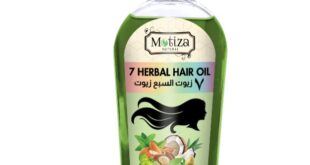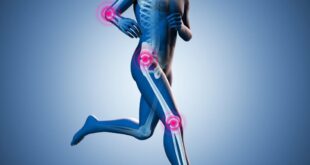Choosing the right type of food for your cat is an important decision that impacts their health, nutrition, and overall well-being. One of the most common dilemmas cat owners face is deciding between wet and dry cat food. Both options have their advantages and drawbacks, and the best choice often depends on your cat’s individual needs, preferences, and lifestyle. In this article, we’ll explore the benefits and disadvantages of wet and dry cat food to help you make an informed decision.
Visit: https://j1petsupplies.com/
Benefits of Wet Cat Food
1. Higher Moisture Content
One of the most significant benefits of wet cat food is its high moisture content. Since cats are naturally prone to low water intake, wet food can help keep them hydrated, which is especially important for cats with urinary or kidney issues.
- Hydration: Cats that consume wet food are more likely to stay hydrated, which can reduce the risk of urinary tract infections and kidney disease.
- Natural Diet Mimicry: Wet food more closely mimics the natural moisture-rich diet of wild cats, who obtain most of their hydration from their prey.
2. Better for Weight Management
Wet cat food tends to be lower in carbohydrates and higher in protein compared to dry food, making it a good option for cats that need to manage their weight.
- Fewer Calories: The higher water content in wet food means it is less calorie-dense, which can help prevent obesity.
- Promotes Satiety: The high protein and moisture content help your cat feel fuller for longer, reducing the likelihood of overeating.
3. More Palatable
Wet food is generally more aromatic and flavorful than dry food, which can be particularly appealing to picky eaters or older cats with diminished senses of taste and smell.
- Encourages Eating: Cats that are unwell, elderly, or otherwise picky might be more inclined to eat wet food due to its richer aroma and taste.
- Easier to Chew: Wet food is softer and easier to chew, making it an ideal choice for cats with dental issues or missing teeth.
Benefits of Dry Cat Food
1. Convenience and Ease of Feeding
Dry cat food, or kibble, is often more convenient for cat owners due to its long shelf life and ease of storage. It can be left out for longer periods without spoiling, which is ideal for free-feeding cats.
- Less Mess: Dry food doesn’t require refrigeration and creates less mess during feeding.
- Cost-Effective: Generally, dry food is more affordable than wet food, especially if you’re feeding multiple cats.
2. Supports Dental Health
Dry cat food can help with dental hygiene by reducing plaque and tartar buildup as your cat chews the kibble.
- Dental Benefits: The mechanical action of chewing dry kibble can help scrape off plaque, which can reduce the risk of dental diseases.
- Promotes Healthy Gums: Regular chewing of dry food can also help strengthen gums and maintain oral health.
3. Nutrient Density
Dry cat food is typically more calorie-dense, making it an excellent option for cats with higher energy needs, such as active or growing kittens.
- High-Calorie Content: For underweight or highly active cats, the calorie-dense nature of dry food can help maintain or increase body weight.
- Balanced Nutrition: Dry cat food is often formulated to be nutritionally complete, offering a balance of proteins, fats, vitamins, and minerals.
Drawbacks of Wet and Dry Cat Food
Wet Cat Food Drawbacks
- Cost: Wet cat food is generally more expensive per serving compared to dry food.
- Storage: Once opened, wet food needs to be refrigerated and used within a few days, which can be less convenient.
- Dental Health: Wet food doesn’t provide the same dental benefits as dry food, and relying solely on wet food may increase the risk of dental issues.
Dry Cat Food Drawbacks
- Lower Moisture Content: The lack of moisture in dry food can contribute to dehydration, especially if your cat doesn’t drink enough water.
- Potential for Overeating: Due to its calorie density, it’s easier for cats to overeat dry food, which can lead to obesity if portions aren’t controlled.
- Picky Eaters: Some cats may not find dry food as appealing as wet food, leading to potential issues with food acceptance.
Combining Wet and Dry Food: The Best of Both Worlds?
For many cat owners, the solution to the wet vs. dry dilemma is to offer a combination of both. This approach allows you to take advantage of the benefits of each type of food while mitigating some of the drawbacks.
- Hydration and Dental Health: Mixing wet food with dry food can help keep your cat hydrated while still providing the dental benefits of dry kibble.
- Balanced Nutrition: A combination diet can offer a more balanced approach to nutrition, ensuring your cat receives the moisture, protein, and calories they need.
- Variety: Offering both wet and dry food can prevent your cat from becoming too accustomed to one type of food, which can be useful if dietary changes are necessary in the future. https://theonlineshoppingtown.co.uk/
Conclusion
When deciding between wet and dry cat food, consider your cat’s specific needs, lifestyle, and preferences. Wet food is an excellent choice for cats that need additional hydration, have dental issues, or are picky eaters. Dry food, on the other hand, offers convenience, cost-effectiveness, and dental benefits. Combining both wet and dry food can provide a balanced, varied diet that supports your cat’s overall health and well-being. Always consult with your veterinarian to determine the best diet for your cat’s individual needs.



